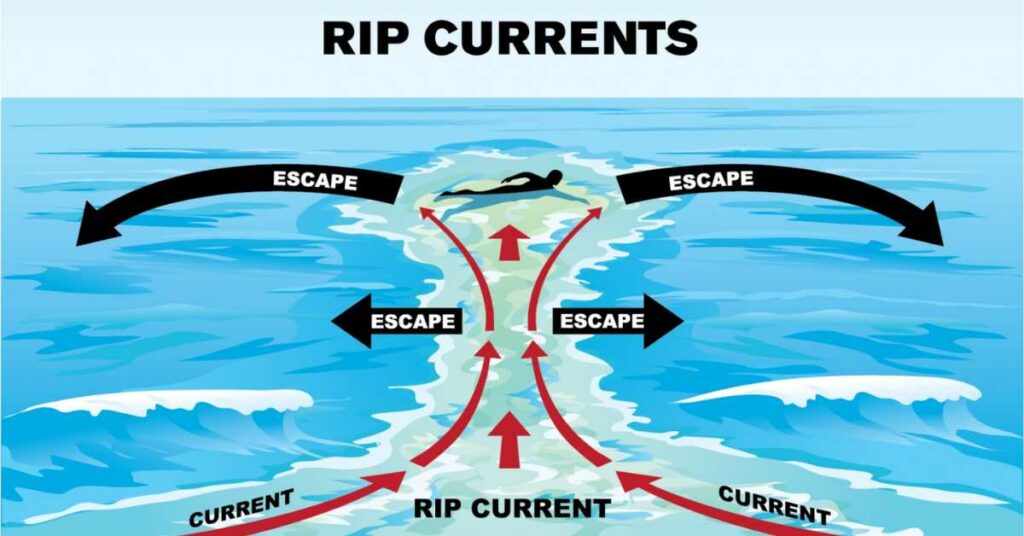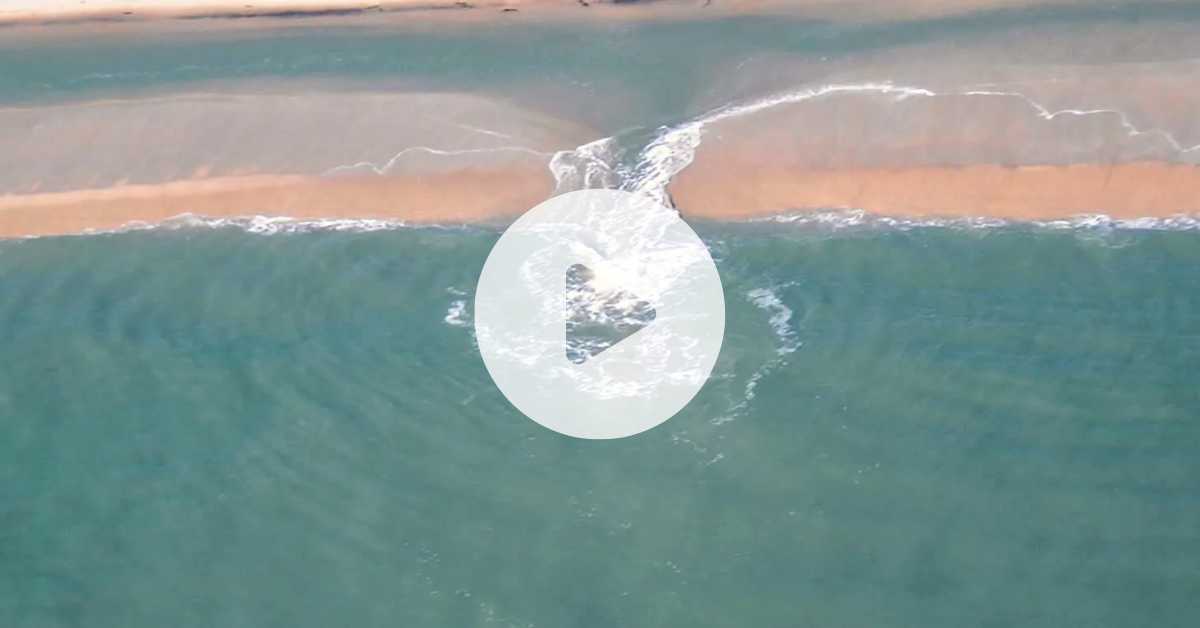In the vast beauty of the ocean, there is a secret danger that challenges those who aren’t paying attention. Rip currents, which are fast and dangerous ways that water power moves through the water, demand respect and attention. As the tides rise and fall in a steady pattern, these mysterious currents cut their way through the water, often without being seen. In this world where danger is hidden, we set out on a trip to learn the truth about rip currents and show how strong they are.
What Is A Rip Current?

Rip currents are strong, narrow paths of fast-moving water that are common along the U.S.’s East, Gulf, and West coasts and along the Great Lakes shores.
Rip currents can move as fast as eight feet per second, which is faster than an Olympic sprinter.
People who are scared of rip currents often try to fight them by swimming straight back to shore, which puts them at risk of dying because they are too tired.
In the U.S., lifeguards save tens of thousands of people from rip currents yearly, but rip currents kill about 100 people yearly. Don’t try to fight a rip current if you get caught in one. Swim straight to the shore and then swim at an angle back to the shore.
Even though the names are often mixed up, rip currents and rip tides are not the same. A rip tide is a type of current that occurs when tidal water moves quickly through ports, embayments, harbor entrances, and exits.
How To Spot Rip Current?
Rip Currents are complicated. They can change form and location quickly and are sometimes hard to see. Look for deeper, darker water, fewer breaking waves, a wavy surface surrounded by smooth water, and anything floating out to sea or foamy, discolored, sandy water moving out beyond the waves. Not all rips show all of these signs at the same time.
Why Are Rip Currents So Dangerous?
Rip currents are dangerous because they take anything in the water out to deeper water and are hard for swimmers to spot. In fact, most people who go swimming don’t know how dangerous they are.
A person swimming in shallow water is likely to move with the feeder currents along the shore without realizing it. Once they reach the main rip current, they may be swept away by it. They are taken out to sea very quickly and taken to depths where waves may break over their heads. At this point, swimmers often fear, which often ends in tragedy. Those who try to swim back to the shore against the rip current will get tired quickly because even the best swimmers will find the rip too strong.
Waves cause rip currents, but the winds also have an effect on them. Whether the tide is coming in or going out changes how deep the water is over sandbars, this is like a switch that turns waves breaking on and off as the level of the water goes up and down. In the southwest of Britain, for example, there are often sandbars near the shore when the tide is low. Low-water waves break over these bars for a few hours and cause rip currents. When the tide comes in, the water level over the bars goes up, the waves stop breaking, and the rips stop moving. This happens twice a day because of the tides and every two weeks because of spring tides and neap tides. This gives rip currents a sort of regular schedule.
In The End
Rip currents are strong, dangerous water currents that put divers in a lot of danger. They are a serious threat because they move quickly and can quickly carry people away from shore. It is very important to be able to spot the signs of rip currents, such as deeper water, fewer waves breaking, and foamy water with a different color. If you get stuck in a rip current, you shouldn’t try to swim against it because you’ll get tired quickly.
They should instead swim straight to the shore until they are out of the current and then swim at an angle back to safety. Knowing about rip currents and being careful can help keep bad things from happening in the water. Next time, check back on this page, The Current Online, for something interesting.




